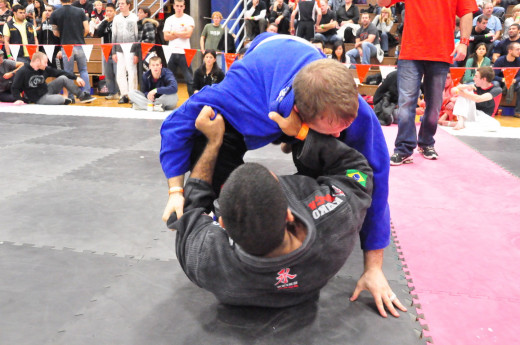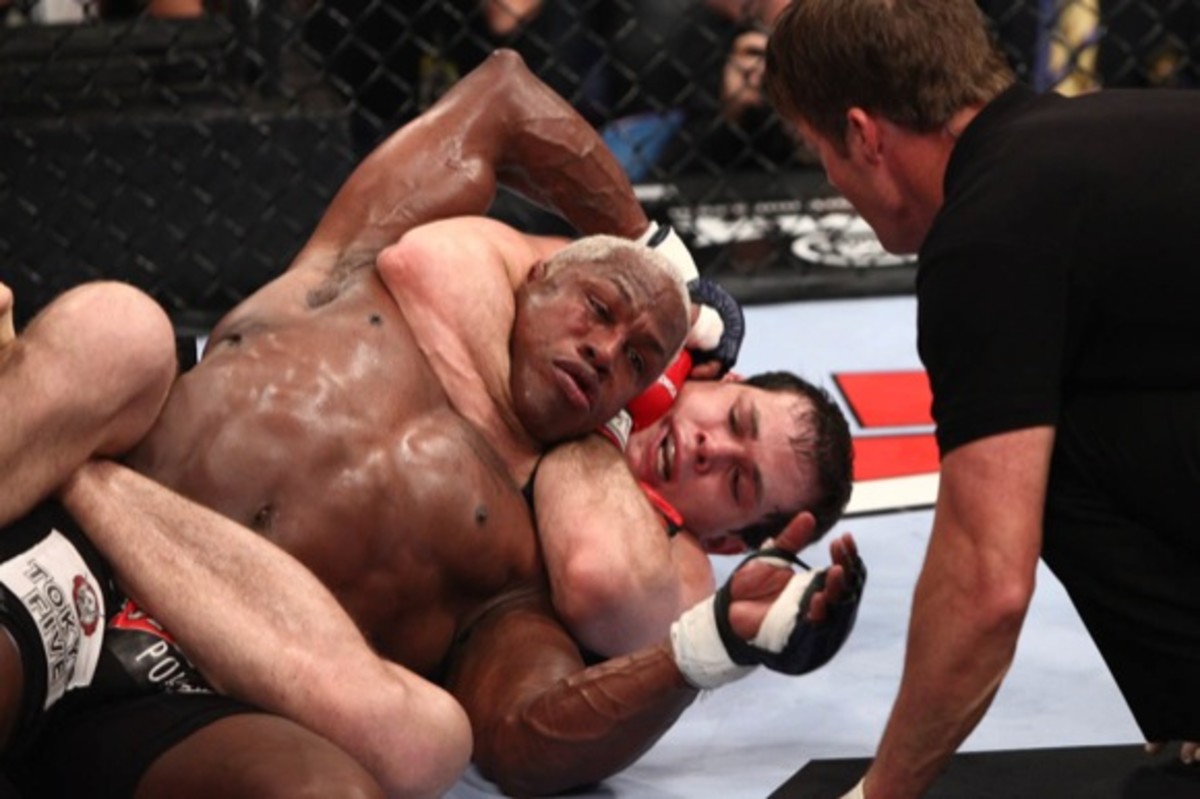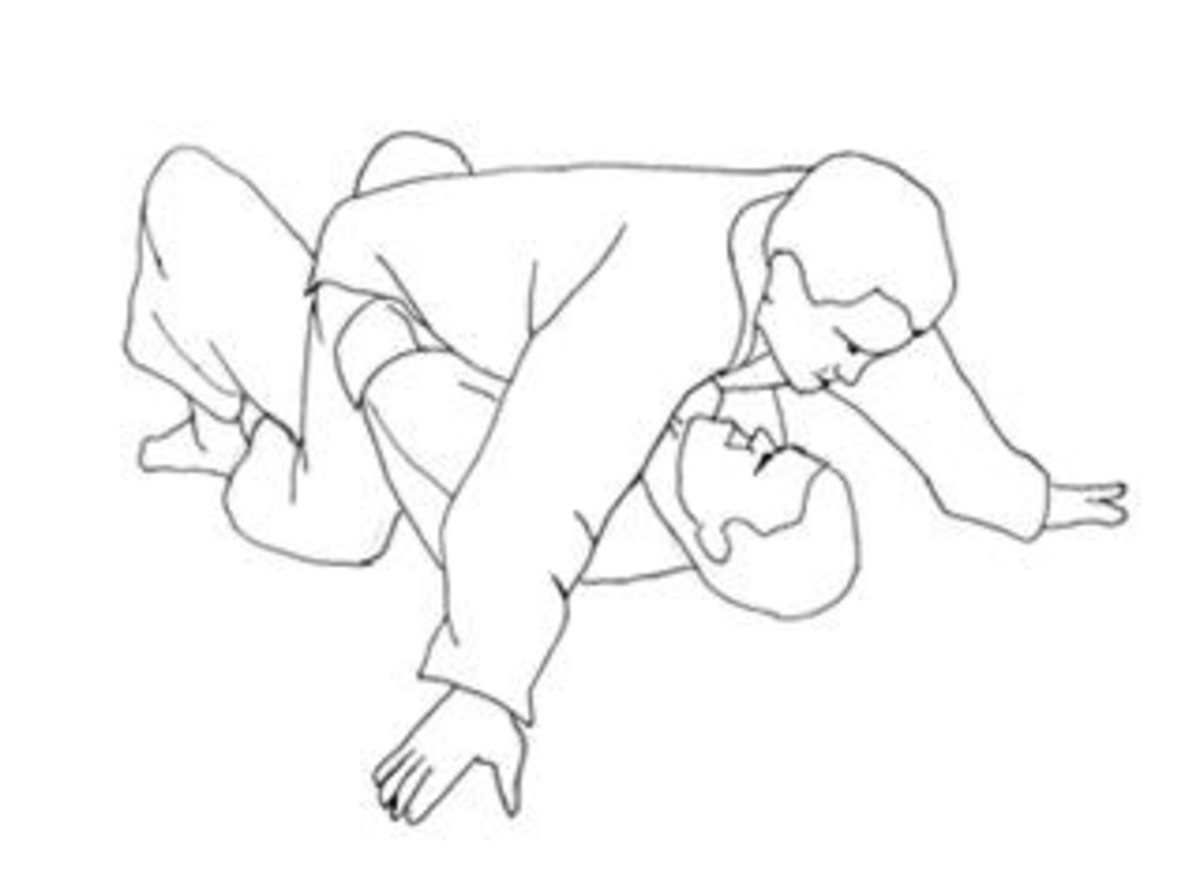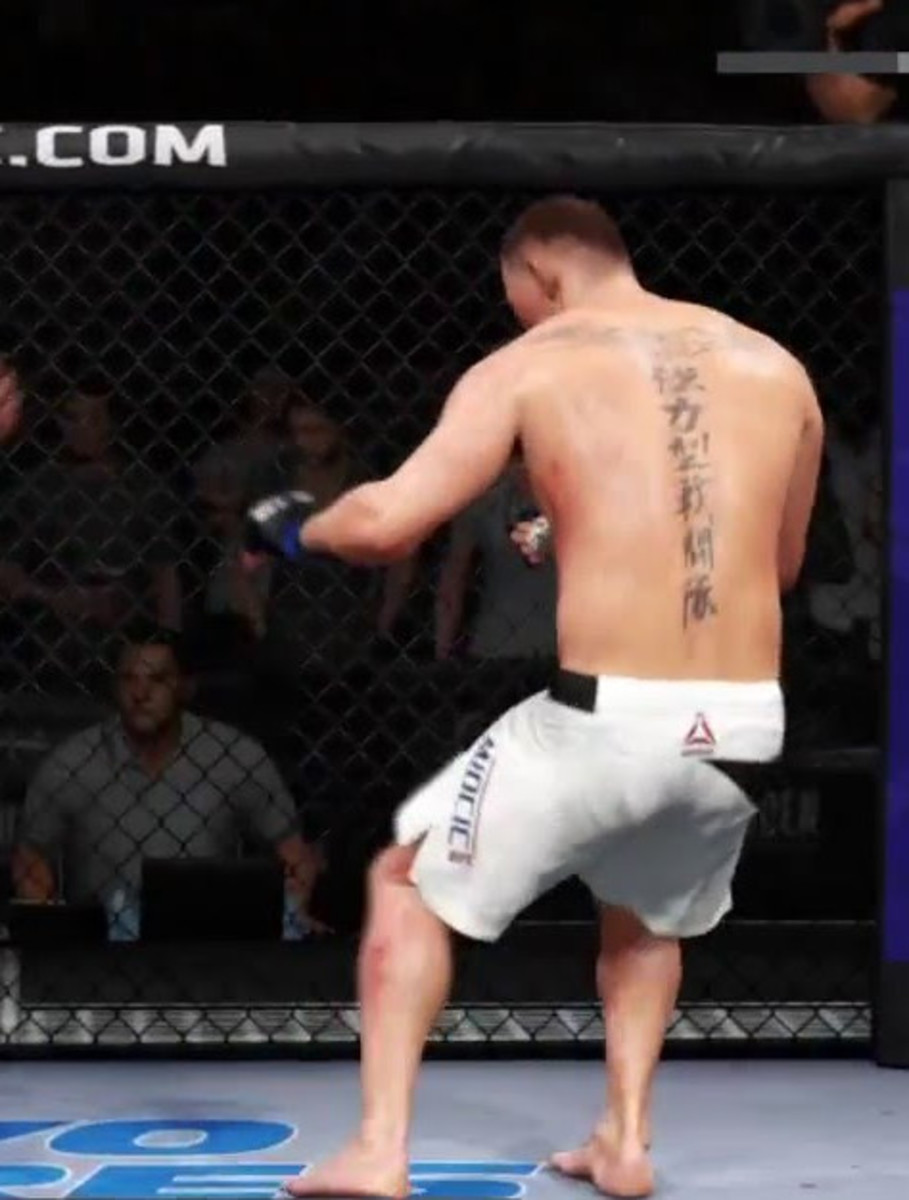- HubPages»
- Sports and Recreation»
- Individual Sports»
- Martial Arts
How to Perform Three Basic Brazilian Jiu Jitsu Chokes

Brazilian Jiu Jitsu is a style of submission grappling that employs leverage and technique to defeat opponents. Its modern incarnation was largely developed by the Gracie family of Brazil; they founded the Ultimate Fighting Championship, or UFC, to demonstrate the effectiveness of Jiu Jitsu against other styles of martial arts. The basic chokeholds used by Brazilian Jiu Jitsu practitioners can be very useful for other styles of grapplers as well, such as catch wrestlers or Sambo specialists. All submission grapplers should practice the rear naked choke, the guillotine choke and the triangle choke until performing them becomes second nature.

RNC
The rear naked choke, or RNC, is one of the most well-known and effective chokes in Brazilian Jiu Jitsu. Also known as the "mata leão," or "lion-killer," it is performed while you have control of your opponent's back. Your first priority should be to maintain your dominant position on your opponent's back. Keep your feet hooked inside your opponent's hips, but do not cross them; this common mistake can leave you caught in a painful ankle lock.
To set up the rear naked choke, slide your right hand under your opponent's chin and around his neck until his chin is in the crook of your elbow. Next, grasp your left bicep with your right hand; keep your thumb snug against your fingers. Now slide your left hand and forearm behind your opponent's head; if possible, hook your left hand over your own right shoulder or tricep.
Once you have locked in the rear naked choke, smoothly tighten your grip and pull your shoulders back in a rowing motion. At the same time, arch your entire body, pressing your hips forward and your legs back to stretch your opponent out and increase the pressure on his neck. If you set up the choke properly, it will cut off the blood flowing to his brain through the carotid arteries on either side of his neck, forcing him to tap out or be rendered unconscious.

Guillotine
The guillotine is another very common Brazilian Jiu Jitsu chokehold; unlike the rear naked choke, it is performed from in front of your opponent. Although the specific scenarios in which you would use it can vary widely, one of the most common is as a counter to your opponent's takedown attempt. In that case, drop your hips back as your opponent shoots in on you, pressing your chest into the back of his head. At the same time, slide your right hand under your opponent's chin as if you were attempting to grab him in a headlock. Face the palm of your right hand away from your opponent, then secure the blade of your right hand with your left hand. The palm of your left hand should be against the back of your right hand, and the base of your right thumb should be just past your opponent's windpipe. To finish securing the grip, press your right shoulder forward against the back of your opponent's head, preventing his head from slipping out of the hold.
To actually apply the choke, roll to your back and lock your legs around your opponent, closing your guard. Position your legs as high on your opponent's torso as possible to increase the pressure on his neck. Pinch your knees together, pull down with your legs, arch your body backwards and pull your shoulders back to drive the edge of your right forearm into your opponent's throat. Unlike the rear naked choke, which cuts off blood flow to the brain, this version of the guillotine choke is a wind choke, also known as an air choke. It prevents your opponent from breathing, and is extremely painful. There are many variations and other versions of the guillotine choke as well, some of which work in somewhat different ways; however, this is one of the simplest.

Triangle
You will be able to catch the triangle choke most often while fighting off your back with your opponent controlled in your guard. Your goal, if you wish to lock in a triangle choke, is to catch your opponent with one arm inside your guard -- between your legs -- and one arm outside your guard. Many grapplers accidentally put themselves in this position while attempting to pass the guard, a mistake that you may be able to exploit. When you notice your opponent's arms in the proper position for the triangle choke, you must move quickly to lock it in before he escapes.
If your opponent left his right arm inside your guard, extend your hips up as high as you can, extending your right leg straight up in the air. Next, chop your right leg down across the back of your opponent's neck and shoulder, breaking his posture. Throw your left leg over the top of your right ankle; your right foot should be locked behind your left knee. Pass your opponent's right arm across his neck; this should form a triangle shape between your opponent's arm and your two legs, giving the choke its name. To finish the choke, pinch your knees together, pull down on the back of your opponent's head and extend your hips. Like the rear naked choke, the triangle choke works by cutting off the blood flowing to your opponent's brain.

References
Army Study Guide: "Rear Naked Choke"
LockFlow: "Rear Naked Choke"
Army Study Guide: "Front Guillotine Choke"
MMALinker: "Guillotine Choke"
Army Study Guide: "Triangle Choke"
Austin Jiu-Jitsu: "Triangle Choke"








